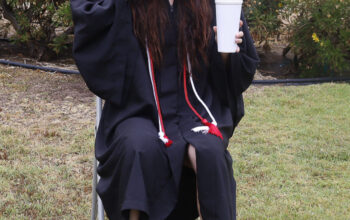Three words: Bicycle. Sharing. Programs.
Modern transportation methods are on the rise, and we are beginning to see colleges across California tend to an up-and-coming transportation trend.
Students, staff and faculty from Pierce College have been deciding whether or not to allow designated bike lanes on campus for student accessibility.
Electronically powered scooters and bikes such as Birds, Limes, and Jump bikes have been appearing on and off campus during the first weeks of the semester. This advent of micromobility is the first step toward sustainable transportation.
E-scooters and bikes are a main type of transportation that can be very efficient for many students attending Pierce. More than 19,500 people bike to work on 593 miles of bikeways in Los Angeles every day, according to the Los Angeles Department of Transportation. Surely, Pierce students are included among that five-digit number.
Most students have a really busy schedule, so these modern modes of transportation can help students get to and from their classes on time.
A bike lane has many purposes, but the two main objectives are to show direction and to serve protection.
According to the first Campus Travel Survey by UC Davis, the percentage of the population that is commuting by bike has grown exponentially. In 2007, 38 percent of the population rode a bike to school. The number began to climb 3 percent from 44 percent in 2012-13, and rose again to 47 percent when surveyed in 2014-15.
More often than not, students need to rush during the mere few minutes they have between classes to make it in time for their next one.
According to the Frequently Asked Questions on the Pierce website, there are bike racks set up at different locations of the campus for students to securely lock their bikes when they attend class.
If the classroom is located on the other side of campus, walking simply won’t make the cut. Cycling or riding to opposite sides of Pierce provides students who already cycle to campus a very easy solution to this dilemma.
If the administration passed regulations to initiate bike lanes on campus, it would make getting on time to class easy for students who use bikes to get across campus.
The bike racks are already installed, but Pierce currently has a ban on riding bikes and skateboards on the school grounds. Due to this restriction, having bike racks placed in different areas around campus is ineffective since they are not being used to their fullest ability.
To minimize student crashes and injuries, the rule prohibiting pedaling on campus was most likely implemented. Adding a bike lane to the campus would bring us one tread closer to a safer, efficient campus.
According to Bicycle Universe, other countries with higher rates of cycling, and lower rates of cyclist injuries, have implemented bike lanes with regulations to keep pedestrians and cyclists safe. Designated walking areas are provided and a separately marked lane for riding, eliminating all the confusion and possible injury with students getting in each other’s ways. Unfortunately, no matter how safe you are and how many rules you follow, accidents can still happen to bike riders. If you have been in an accident that you weren’t the cause of then you might need to contact an attorney after a bicycle accident injury to see how they could help you.
Many students attending Pierce are aware that the “no riding” rule in place but know has minimal effect since it is not enforced regularly. Why not pedal this perishing policy into extinction?
Students should be given the option to ride their bicycles whenever they want to, with the administration’s permission, without fear of crashing into another student, faculty member, or staff. Pierce would be setting itself up for more efficiency if they were to install bike lanes on school grounds.



